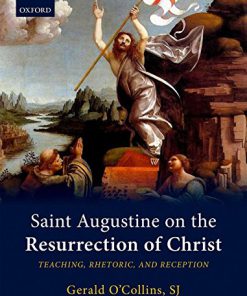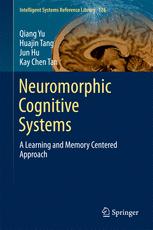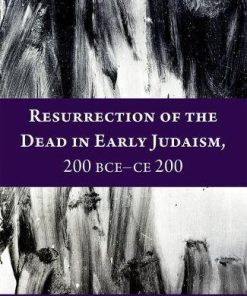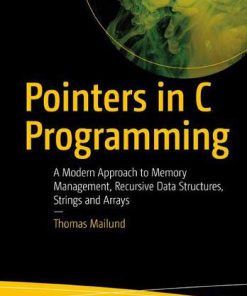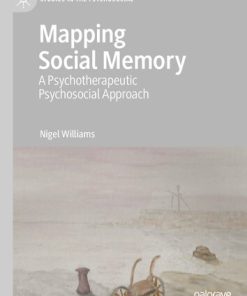Resurrection Remembered A Memory Approach to Jesus Resurrection in First Corinthians 1st Edition by David Graieg 1040003312 9781040003312
$50.00 Original price was: $50.00.$25.00Current price is: $25.00.
Resurrection Remembered; A Memory Approach to Jesus’ Resurrection in First Corinthians 1st Edition by David Graieg – Ebook PDF Instant Download/DeliveryISBN: 1040003312, 9781040003312
Full download Resurrection Remembered; A Memory Approach to Jesus’ Resurrection in First Corinthians 1st Edition after payment.

Product details:
ISBN-10 : 1040003312
ISBN-13 : 9781040003312
Author: David Graieg
This book is the first major study to investigate Jesus’ resurrection using a memory approach. It develops the logic for and the methodology of a memory approach, including that there were about two decades between the events surrounding Jesus’ resurrection and the recording of those events in First Corinthians. The memory of those events was frequently rehearsed, perhaps weekly. The transmission of the oral tradition occurred in various ways, including the overlooked fourth model—“formal uncontrolled.” Consideration is given to an examination of the philosophy and psychology of memory (including past and new research on (1) the constructive nature of memory, (2) social memory, (3) transience, (4) memory distortion, (5) false memories, (6) the social contagion of memory, and (7) flashbulb memory). In addition, this is the first New Testament study to consider the insights for a memory approach from the philosophical considerations of (1) forgetting and (2) the theories of remembering and from the psychological studies on (1) memory conformity, (2) memory and age, and (3) the effects of health on memory. It is argued that Paul remembers Jesus as having been resurrected with a transformed physical body. Furthermore, the centrality of Jesus’ resurrection in Paul’s theology suggests it was a deeply embedded memory of primary importance to the social identity of the early Christian communities. New Testament scholars and students will want to take note of how this work advances the discussion in historical Jesus studies. The broader Christian audience will also find the apologetic implications of interest.
Resurrection Remembered; A Memory Approach to Jesus’ Resurrection in First Corinthians 1st Table of contents:
1 Introduction
1.1 Thesis
1.2 Definitions
1.3 The Need for the Study
1.4 Literature Review
1.4.1 Research on Jesus’ Resurrection in First Corinthians
1.4.1.1 Nicholas Thomas Wright
1.4.1.2 Michael R Licona
1.4.1.3 Conclusion
1.4.2 New Testament Research Engaged with Memory Theory
1.4.2.1 Bart D. Ehrman
1.4.2.2 Tuomas Havukainen
1.4.2.3 Conclusion
1.4.3 Jesus’ Resurrection and Memory
1.4.3.1 James D. G. Dunn
1.4.3.2 Dale C. Allison Jr.
1.4.3.3 Matthew Levering
1.4.3.4 Peter F. Carnley
1.4.4 Conclusion
1.5 The Methodology of the Study
1.6 Overview of the Study
2 Memories of Jesus’ Resurrection in First Corinthians
2.1 Memories of Jesus’ Resurrection in First Corinthians
2.2 Hermeneutics
2.3 First Corinthians 6:14
2.4 First Corinthians 15
2.4.1 First Corinthians 15:1–11
2.4.1.1 Christ Died
2.4.1.2 Buried
2.4.1.3 Raised
2.4.1.4 On the Third Day
2.4.1.5 According to the Scriptures
2.4.1.6 He Appeared to Cephas
2.4.1.7 To the Twelve
2.4.1.8 To More Than 500
2.4.1.9 He Appeared to James
2.4.1.10 To All the Apostles
2.4.1.11 Lastly, to Paul
2.4.2 First Corinthians 15:12–58
2.4.2.1 First Corinthians 15:12–19
2.4.2.2 First Corinthians 15:20–28
2.4.2.3 First Corinthians 15:29–34
2.4.2.4 First Corinthians 15:35–49
2.4.2.5 First Corinthians 15:50–58
2.4.3 Conclusion
2.5 Summary
3 Some Implications from Memory Theory for Understanding Jesus’ Resurrection
3.1 The Relevance of Memory
3.1.1 The Theory of the Relevance of Memory
3.1.2 The Implications of the Relevance of Memory for First Corinthians
3.2 The Period Between Events and Writing
3.3 Performance Frequency
3.3.1 The Theory of Performance Frequency
3.3.2 The Implications of Performance Frequency
3.4 Models of Orality
3.4.1 The Theory of Models of Orality
3.4.2 The Implications of Models of Orality
3.5 The Philosophy and Psychology of Memory
3.5.1 Defining Memory
3.5.2 Taxonomies of Memory
3.5.2.1 The Theory of Taxonomies of Memory
3.5.2.2 The Implications of Taxonomies of Memory
3.5.3 Passivism and Constructivism
3.5.3.1 The Theory of Passivism and Constructivism
3.5.3.2 The Implications of Passivism and Constructivism
3.5.4 Presentism and Continuism
3.5.4.1 The Theory of Presentism and Continuism
3.5.4.2 The Implications of Presentism and Continuism
3.5.5 Forgetting
3.5.5.1 The Theory of Forgetting
3.5.5.2 The Implications of Forgetting
3.5.6 Remembering
3.5.6.1 The Theories of Remembering
3.5.6.2 The Implications of Theories of Remembering
3.5.7 Social and Collective Memory
3.5.7.1 The Theory of Social Memory
3.5.7.2 The Implications of Social Memory
3.5.8 Some Limitations to Human Memory
3.5.8.1 The Implications of Transience
3.5.8.2 The Implications of Absent-Mindedness
3.5.8.3 The Implications of Blocking
3.5.8.4 The Implications of Misattribution
3.5.8.5 The Implications of Persistence
3.5.9 Some Studies on Memory
3.5.9.1 Forgetting Curves
3.5.9.2 Schemata
3.5.9.3 Memory Distortion
3.5.9.4 DRM Lists and False Memories
3.5.9.5 Suggestibility
3.5.9.6 The Social Contagion of Memory
3.5.9.7 Memory Conformity
3.5.9.8 Hindsight Bias
3.5.9.9 Personal Event and Flashbulb Memories
3.5.9.10 Memory and Age
3.5.9.11 The Effects of Health on Memory
3.6 Summary
4 Conclusion
4.1 Findings
4.2 Contribution
4.3 Directions for Further Study
4.4 Conclusion
People also search for Resurrection Remembered; A Memory Approach to Jesus’ Resurrection in First Corinthians 1st:
resurrection examples
resurrection day activities
day of resurrection bible
resurrection rembrandt
resurrection renaissance
Tags: Resurrection Remembered, Memory Approach, Jesus Resurrection, Corinthians, David Graieg
You may also like…
History - World History
Saint Augustine on the resurrection of Christ : teaching, rhetoric, and reception O’Collins
Romance - Military Romance
Holden s Resurrection Gemini Group 6 1st Edition Riley Edwards [Edwards
Politics & Philosophy
Religion & Spirituality - Bible
Resurrection of the dead in early Judaism, 200 BCE-CE 200 First Edition Elledge
Computers - Programming
Relationships & Lifestyle - Diet & Nutrition
History - European History
Napoleon Vol 3 Passion Death and Resurrection 1815 1840 2018 Philip G. Dwyer



